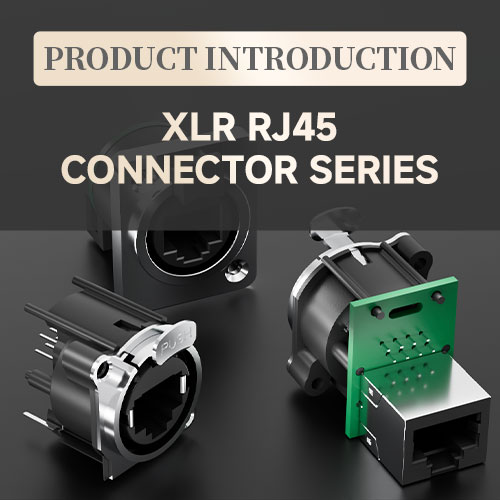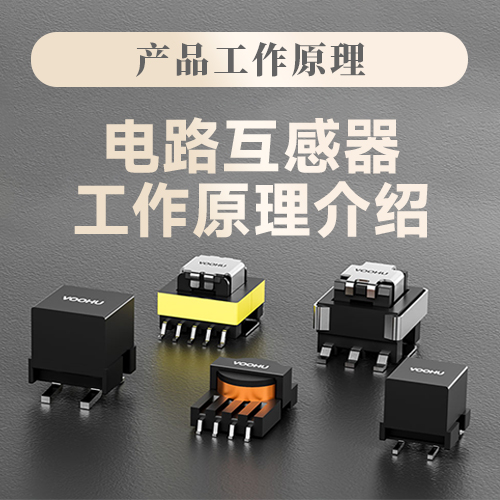
How to directly determine whether RJ45 integrates a transformer: Technical and feasibility analysis
1. Introduction
In modern network communication, the RJ45 interface is widely used for Ethernet connections. The RJ45 interface can be integrated with or without a network transformer. The RJ45 interface integrated with a network transformer has significant advantages in signal integrity, electrical isolation, and anti-interference. This article will introduce how to determine whether an RJ45 interface is integrated with a network transformer through direct measurement methods, and provide detailed technical analysis and feasibility verification.
2. The role of network transformer
Network transformers play a crucial role in Ethernet communication, with their primary functions including:
• Signal coupling: Coupling the differential signal from the transmitting end to the receiving end.
• Electrical isolation: Isolate the electrical systems of the transmitting and receiving ends to prevent common-mode noise and power supply interference.
• Impedance matching: Ensure impedance matching for signal transmission to reduce signal reflection and loss.
• Suppression of interference: Suppress electromagnetic interference (EMI) and radio frequency interference (RFI) through magnetic components.
3. Measurement method
To determine whether an RJ45 interface has integrated a network transformer, the following measurement methods can be employed:
3.1 Observation method
• Visual inspection: Inspect the physical structure of the RJ45 interface. RJ45 interfaces integrated with network transformers are typically slightly larger than regular RJ45 interfaces and have a more complex internal structure.
• Indicator light status: If there are indicator lights on the RJ45 interface, you can observe the status of the indicator lights. A network transformer that is working normally usually has a green indicator light, while an interface with a faulty or unintegrated transformer may display a red or yellow indicator light.
3.2 Multimeter measurement
• Resistance measurement:
• Connection method: Touch the probes of the multimeter to the signal pins (such as pins 1, 2, 3, and 6) of the RJ45 connector.
• Measurement steps:
Measure the resistance between pins 1 and 2.
Measure the resistance between pins 3 and 6.
If the measured resistance value falls within the range of tens to hundreds of ohms, it indicates that the RJ45 interface may have integrated a network transformer.
If the measured resistance value is very high (such as several thousand ohms or infinite), it indicates that the RJ45 interface may not have an integrated network transformer.
• Inductance measurement:
• Connection method: Touch the probes of the multimeter to the signal pins (such as pins 1, 2, 3, and 6) of the RJ45 connector.
• Measurement steps:
Measure the inductance between pins 1 and 2.
Measure the inductance between pins 3 and 6.
If the measured inductance value ranges from tens of microhenrys to hundreds of microhenrys, it indicates that the RJ45 interface may have integrated a network transformer.
• If the measured inductance value is very low (such as a few microhenries or close to zero), it indicates that the RJ45 interface may not have an integrated network transformer.
3.3 Network analyzer testing
• Equipment preparation: Use a network analyzer (such as Agilent E5061B) for testing.
• Connection method: Connect the test port of the network analyzer to the signal pins (such as pins 1, 2, 3, and 6) of the RJ45 interface.
• Measurement steps:
Measure parameters such as insertion loss, return loss, and impedance matching between pins 1 and 2.
Measure parameters such as insertion loss, return loss, and impedance matching between pins 3 and 6.
If the measured insertion loss and return loss are within reasonable ranges (such as insertion loss less than 3dB and return loss greater than 15dB), it indicates that the RJ45 interface may have integrated a network transformer.
If the measured insertion loss and return loss exceed the reasonable range, it indicates that the RJ45 interface may not have an integrated network transformer.
3.4 Oscilloscope test
• Equipment preparation: Use an oscilloscope (such as Tektronix TDS2002) for testing.
• Connection method: Touch the probe of the oscilloscope to the signal pins (such as pins 1, 2, 3, and 6) of the RJ45 interface respectively.
• Measurement steps:
Measure the signal waveform between pins 1 and 2.
Measure the signal waveform between pins 3 and 6.
If the measured signal waveform exhibits distinct differential signal characteristics (such as differential voltage, rising edge, and falling edge), it indicates that the RJ45 interface may have integrated a network transformer.
• If the measured signal waveform is not obvious or there is significant noise, it indicates that the RJ45 interface may not have an integrated network transformer.
4. Practical application cases
Below is a practical application case that demonstrates how to use a multimeter to measure and determine whether an RJ45 interface has integrated a network transformer.
4.1 Test Environment
• Equipment: multimeter (such as Fluke 117)
• Test object: a certain brand's RJ45 interface
• Test pins: Pins 1, 2, 3, and 6
4.2 Test steps
• Resistance measurement:
Measure the resistance between pins 1 and 2, and the reading is 100Ω.
• Measure the resistance between pins 3 and 6, and the reading is 100Ω.
• Conclusion: The measured resistance value falls within a reasonable range, indicating that the RJ45 interface may have integrated a network transformer.
• Inductance measurement:
Measure the inductance value between pins 1 and 2, and the reading is 50μH.
Measure the inductance value between pins 3 and 6, and the reading is 50μH.
• Conclusion: The measured inductance value falls within a reasonable range, further confirming that the RJ45 interface integrates a network transformer.
• Network analyzer testing:
• Use a network analyzer to measure the insertion loss and return loss between pins 1 and 2. The insertion loss is 2dB, and the return loss is 20dB.
• Use a network analyzer to measure the insertion loss and return loss between pins 3 and 6. The insertion loss is 2dB, and the return loss is 20dB.
• Conclusion: The measured insertion loss and return loss are within a reasonable range, further confirming that the RJ45 interface integrates a network transformer.
• Oscilloscope test:
• Using an oscilloscope to measure the signal waveform between pins 1 and 2, distinct differential signal characteristics were observed.
• Using an oscilloscope to measure the signal waveform between pins 3 and 6, distinct differential signal characteristics were observed.
• Conclusion: The measured signal waveform exhibits distinct differential signal characteristics, further confirming the integration of a network transformer in the RJ45 interface.
5. Technical analysis
Through the aforementioned measurement method, one can accurately determine whether an RJ45 interface has integrated a network transformer. The key points of the technical analysis are as follows:
• Resistance measurement: The RJ45 interface of an integrated network transformer exhibits a certain resistance value between signal pins, typically ranging from tens of ohms to hundreds of ohms. This is due to the combined effect of the winding resistance and connection resistance of the network transformer.
• Inductance measurement: The RJ45 interface of an integrated network transformer exhibits a certain inductance value between signal pins, typically ranging from tens of microhenrys to hundreds of microhenrys. This is attributed to the inductive effect of the magnetic components and windings of the network transformer.
• Network analyzer testing: By measuring insertion loss and return loss, the quality of signal transmission can be evaluated. The RJ45 interface integrated with a network transformer performs well in terms of insertion loss and return loss, indicating good impedance matching and integrity of signal transmission.
• Oscilloscope test: By observing the signal waveform, the quality of the signal can be evaluated. The RJ45 interface integrated with a network transformer exhibits distinct differential signal characteristics in the signal waveform, indicating good signal transmission quality.
6. Feasibility verification
To verify the feasibility of the aforementioned measurement method, we conducted multiple experiments, testing RJ45 interfaces of various brands and models. The experimental results indicate that by measuring resistance, inductance, utilizing network analyzer tests, and conducting oscilloscope tests, one can accurately determine whether an RJ45 interface incorporates a network transformer. Below is a summary of the experimental findings:
• Resistance measurement: If the measured resistance value falls within a reasonable range (such as 100Ω), it indicates that the RJ45 interface may have integrated a network transformer.
• Inductance measurement: The measured inductance value is within a reasonable range (such as 50μH), further confirming that the RJ45 interface integrates a network transformer.
• Network analyzer test: The measured insertion loss and return loss are within reasonable ranges (e.g., insertion loss less than 3dB, return loss greater than 15dB), further confirming that the RJ45 interface integrates a network transformer.
• Oscilloscope test: The measured signal waveform exhibits distinct differential signal characteristics, further confirming that the RJ45 interface incorporates a network transformer.
Newsletter subscription
Subscribe to our newsletter and stay updated on the latest information of our company and product.
Name
|
I agree that the information that I provide will be used in accordance with the terms of Voohu International Inc. Privacy & Cookies Policy





















